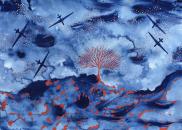Abstract
'I was sixteen years old when I first read “The Women Men Don’t See” by James Tiptree Jr. in 1991. I was a teenager in a small agricultural town in Malaysia who saved her lunch money every week to buy Science Fiction and Fantasy (SFF) books, when she wasn’t borrowing them from the library. The collection I bought had three women in it who were to influence the way I thought about the world, and about my own writing. Ursula K. Le Guin’s “Winter’s King,” and Joanna Russ’s “When It Changed” haunted me when I read the tales for different reasons. “The Women Men Don’t See” was another quietly feminist work of science fiction. So much of “The Women Men Don’t See” resonated with a quiet anger, bristling through the typeface with recollections of multiple elisions. In my twenties, I finally learned that Tiptree was in fact Alice Sheldon, and that she had written for many years under this pseudonym because of the freedom it had given her. I preface this review with my anecdote for three reasons. First, many of the letters in Letters to Tiptree resonated with my own personal experience of my “start” in SFF. Second, in my reading of this collection, I asked myself several intersectional questions in relation to gender, class, and race privilege. For instance, I speak of the heritage of the SFF community and fandom, but am painfully aware that access to this heritage is not easily attained by most. There is also the problematic centring of SFF works in North America, which tends to work towards eliding the work 14 done in other cultures, in different languages. For instance, in Malaysia, the classical hikayats have SFnal elements that predate much of Occidental science fiction by centuries. Third, as a newly professional SFF author writing from the margins of those intersectional categories, reading these letters packed a visceral and emotional punch for me which is deeply pertinent to my discussion of the collection.' (Introduction)
 845505616680547938.jpg
845505616680547938.jpg


